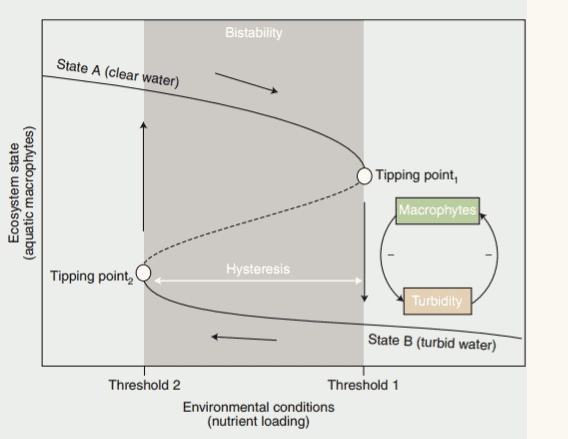Environmental tipping points are catastrophic in nature, and their effects are still poorly understood.

We’re taught as kids about the basics of ecosystems. For instance, plants produce energy from sunlight through photosynthesis. Critters could go on and eat the plants, and then predators hunt down these critters. Bacteria help to decompose decaying matter, and that’s a healthy ecosystem. That view, while essentially correct, is greatly simplified.
A thorough ecosystem understanding is much more complex and requires a vast swath of scientific information and field observations, taking into consideration innumerable environmental factors and biological interactions. Naturally, when you’re working with this level of complexity, things can be easily overlooked — one of these things, researchers argue in a new study, is environmental tipping points.
“Tipping points mark the abrupt shift between contrasting ecosystem states (broadly termed regime shifts) when environmental conditions cross specific thresholds,” write researchers led by Vasilis Dakos from the Institute des Sciences de l’Évolution from Montpellier, France. “Prominent examples are the shift of shallow lakes from a clear to turbid water state and the collapse of vegetation leading to a desert state in drylands.” Another, more familiar situation is the collapse of a fishery through overexploitation — a situation that’s happening in many of the world’s fisheries.
Environmentally, tipping points mark the shift from one environmental state to another. Mathematically, they look like a saddle.

Our understanding of these tipping points is pretty shallow and lacks an evolutionary perspective, Dakos argues. Simply put, tipping points are also associated with feedback loops. For instance, in a shallow lake, macrophytes [what is] prevent the growth of algae by consuming phosphorous, which the algae need to grow. When the phosphorous reaches a critical level, macrophytes can’t consume it all, and the algae start to grow. This makes the water less clear, which generates a vicious cycle: the more turbid the water is, it hinders the development of macrophytes but favors the development of algae, which makes the water even more turbid, and so on.
But tipping points can go both ways, and the same vicious cycle could kick in reverse, leading to the re-emergence of the macrophytes, and the decline of the algae, as the water becomes clearer and clearer. In the two equilibrium points, the system is stable, but between them, the ecosystem can lean one way or another. The forward and backward shift is called hysteresis, and it’s essentially system inertia: the larger it is, the more difficult it is for the system to turn back.
Given the increasing strain that we are placing on the environment through urbanization and climate change, having a better grasp on these tipping points is vital for understanding these ecosystems and ultimately for protecting them.
The study has been published in Nature. DOI 10.1038/s41559-019-0797-2


